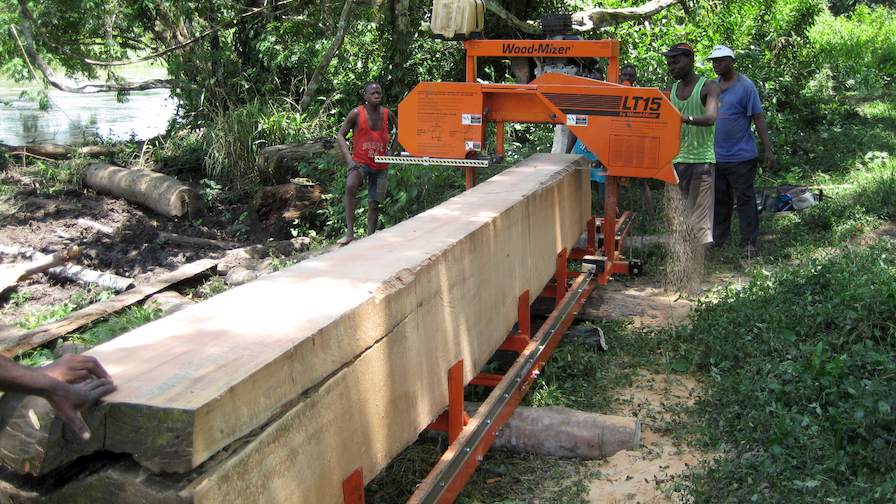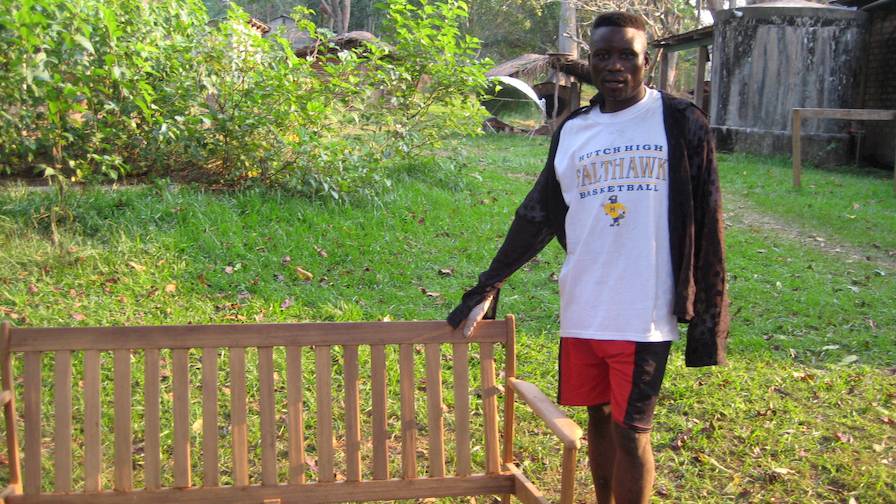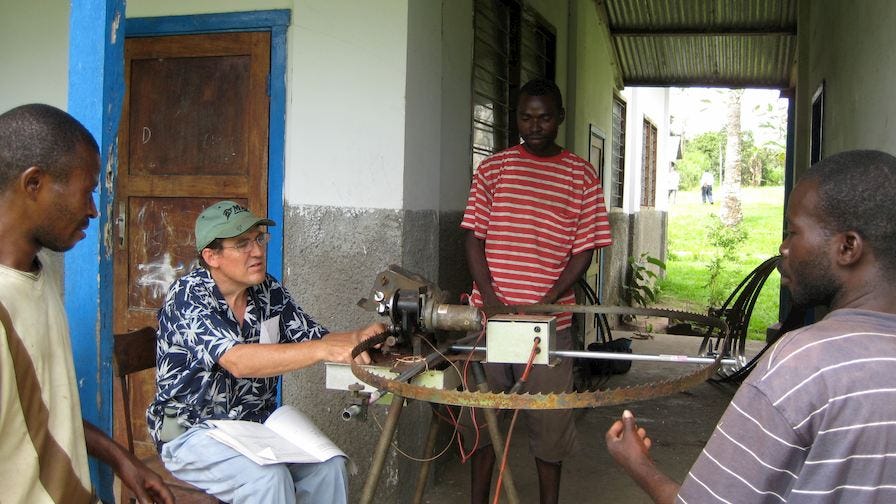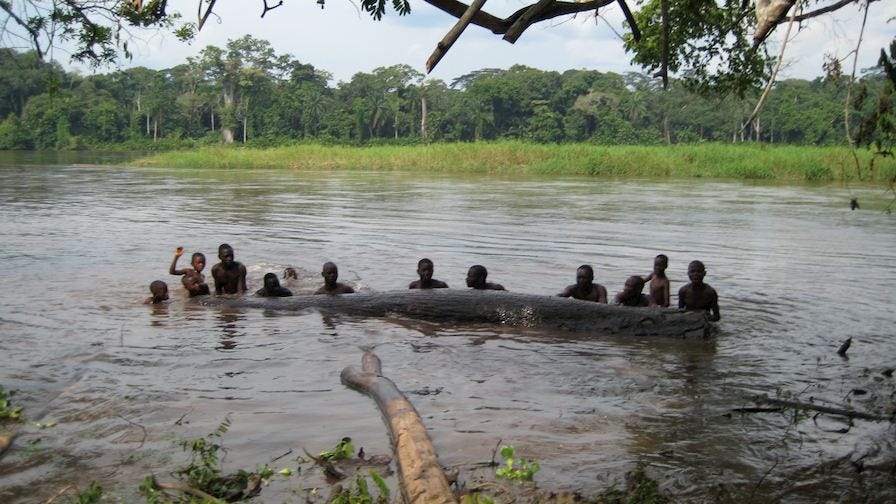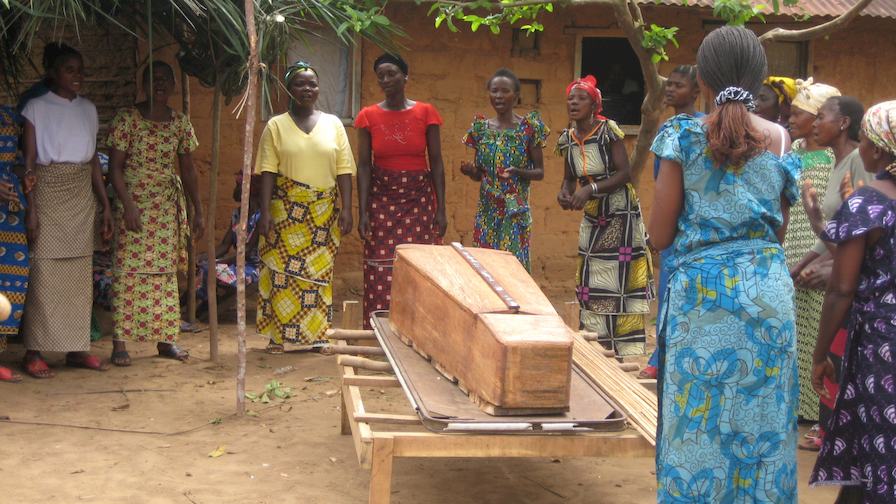One Small Sawmill Creates Positive Change in the Congo Jungle
By Glen Chapman, Missionary, Democratic Republic of the Congo

The Democratic Republic of Congo is among the very poorest countries in the world. In the UN’s Human Development Index, Congo ranked almost last. The Congolese make an average of 50 cents a day, whereas the average level of poverty is $2 a day.
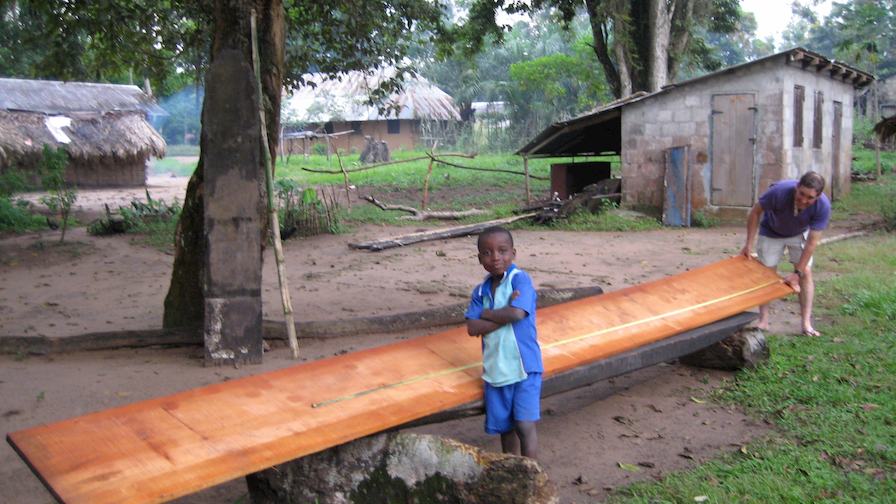

Because of the difficulties of the war, the infrastructure of Congo had all collapsed. There is very little employment, and very little to give people hope. It’s hard to understand a level of poverty where you don’t have tables or chairs, and your children have to eat their meals on the ground because their table has been destroyed and turned into a coffin to hold a revered loved one who has passed on.
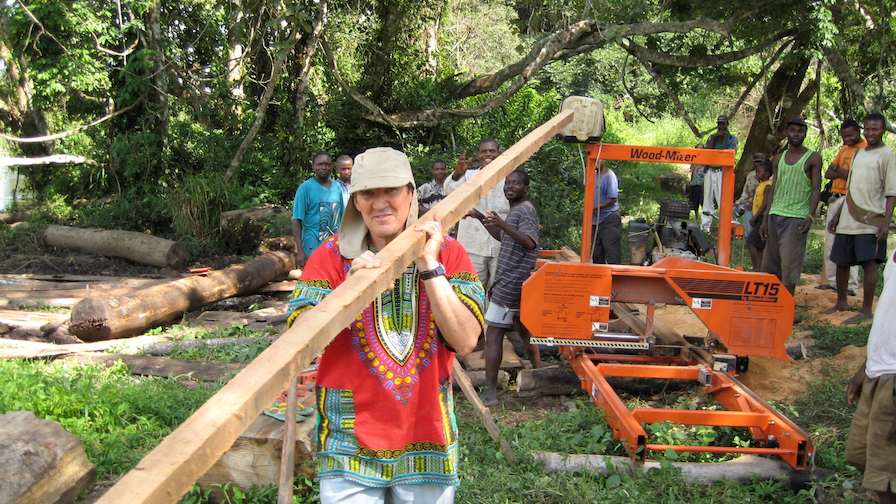

My name is Glen Chapman, and I’m a second-generation missionary to Kikongo with American Baptist International Ministries. My wife, Rita, is a third-generation missionary. Her grandparents went over to the Belgian Congo in 1924. Rita and I arrived as children in 1957 when it was still the Belgian Congo. We grew up there and began our ministry 25 years ago. We’ve seen a lot of changes in the time we’ve been there, but our mission in Congo is still to cross cultural boundaries and make disciples of Jesus Christ.
We mostly work in rural leadership training. Rural is distinguished from urban because, generally, when a villager is called into the ministry, he goes to the capital city. Once he studies there, he stays. Because of this, we have hundreds of churches with multiple pastors in the city. However, in the villages, we have hundreds of churches without any pastoral leadership at all. So our objective is to train people in a rural setting so that they remain rural.
Life in Kikongo is not much different than it was for our grandparents generations ago. Besides being involved in leadership training, we’re also involved in human development projects. That’s where the lumber mill comes in and provides for the needs of the people. Our Wood-Mizer sawmill has really played a key role in bringing development and hope to our Congolese villages in the midst of their poverty.
As a child growing up in Congo, I remember going away to high school in the capital city. In the summers, I came home for vacation. I spent these summers working in the woodshop with the old carpenters who had been trained by the Belgians.
That was a formative time in my life. Being able to work with the carpenters was a great experience. But when I became an adult and returned to the village, the commercial lumber mills that had furnished the lumber no longer existed. If someone needed lumber, he had to go to the city, buy his boards, and send it to his home in a truck.
So, the lumber was virtually unavailable to the villagers at that time. What furniture villagers had in the past was wearing out. There were no longer desks in the schools. If anyone had a table in the house, it was probably destroyed to make a coffin at some point. My friends would complain that they didn’t have a chair on which to seat their guests and their children ate their meals on the ground.
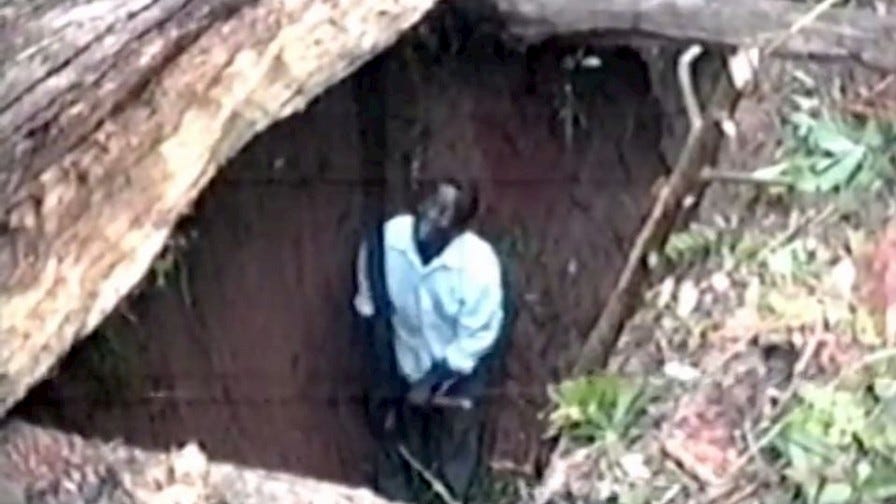

I looked around. We had plenty of trees, so why didn’t we have lumber? I talked with my old carpenter friends and they took me out to the forest. Here, sawyers dug holes beneath the trees and tried to saw boards that turned out rough and very crooked. One man was in the pit while the other man was on top. The man in the pit would get sawdust showered all over him, so he couldn’t maintain a straight cut. It was difficult to make furniture from these boards.
Somewhere along the line, I heard about Wood-Mizer. I saw the inefficiency of our lumber cutting methods and knew it was time to purchase a sawmill. I came back to the States and purchased an LT25.


When the mill arrived in August of 1998, war broke out on the East side of the country. A lot of the missionaries were being evacuated. Just as we began to cut our first trees and I showed the Congolese the usefulness of our sawmill, we were told we had to evacuate as well because the foreign armies were so close to our village. It was a very tense time.


I looked at this project that had been a dream. The mill had just arrived—how could I leave when this dream was just beginning to be fulfilled? I put my wife and children on a plane, and they were evacuated to South Africa. I stayed on at Kikongo.
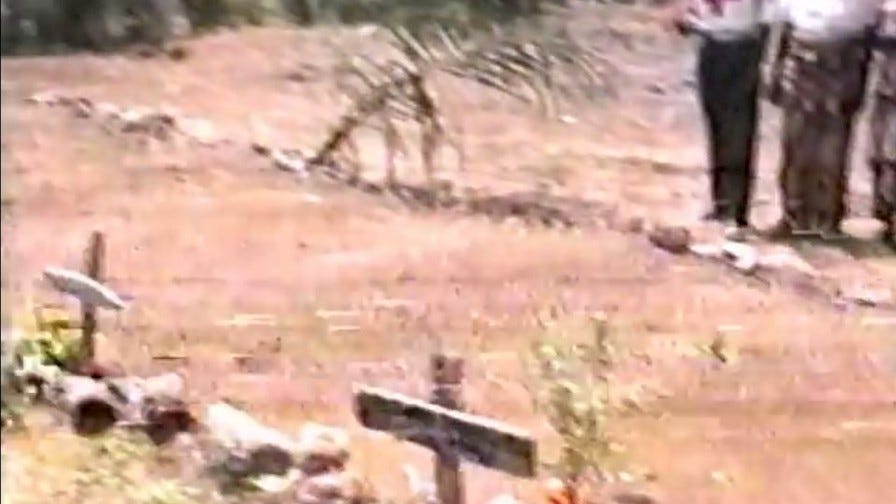

As the armies advanced across the country, we were experiencing new birth in Kikongo. We were rebuilding while the rest of the country was in the process of destroying. To deal with the loneliness of having my family gone, we discovered the process of using the new mill.
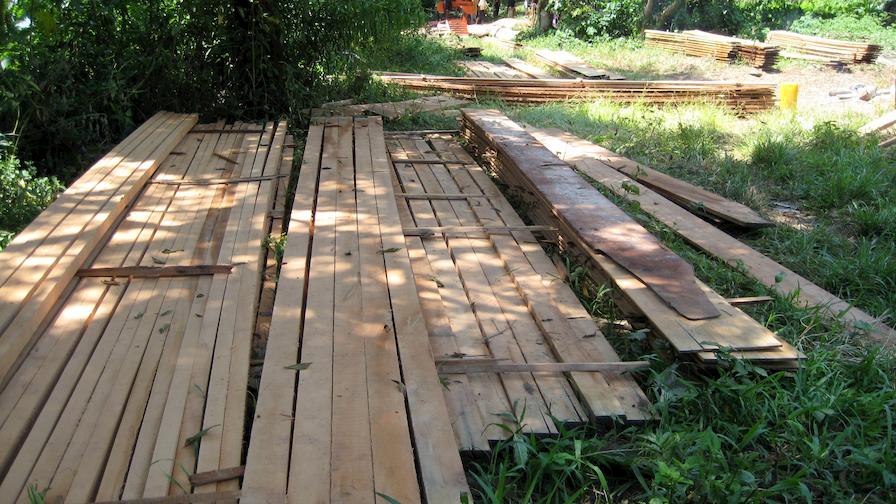



All the villagers were thrilled. There had never been an industry in the area. All of a sudden, the children who previously could not have been employed were now working at the mill and learning how to be carpenters. People with carpentry skills arrived and cut lumber. Boat builders arrived and began to build boats. We were just a little village that offered hope in the midst of the despair around us.
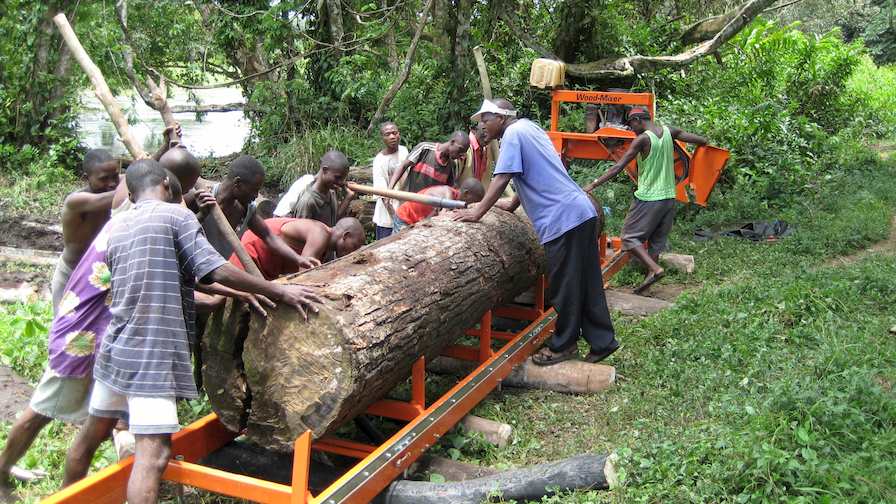

That was the first year we used the mill, and we continued to use it for eight more years. After that, we purchased an LT15 sawmill because its portability helped in an area where we had no trucks to pull it around. We could take it apart and carry the different sections by hand. The war continued, and it turned out to be Africa’s First World War. We were the only foreigners at our mission station during this time. The government did not normally look in favor upon the Westerners, but they favored us personally because we were providing lumber. The officials began to come to us for their wood.
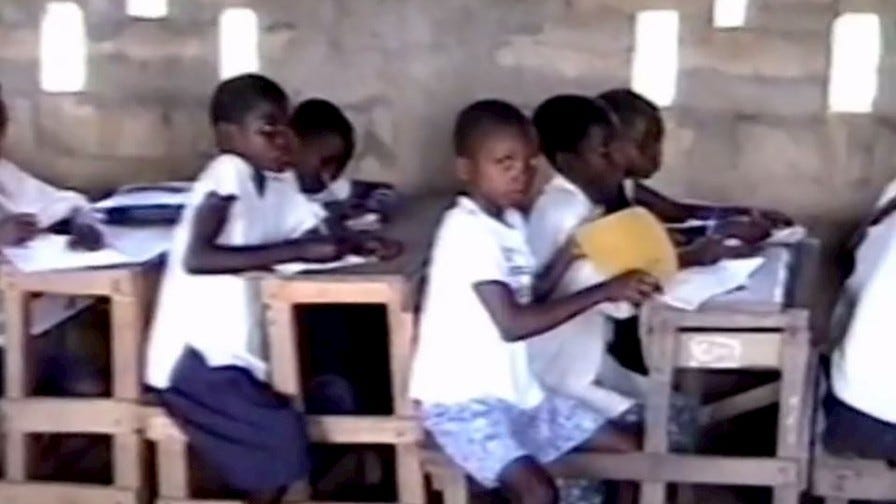

The mill helped provide diplomacy and offered credibility to the church and to our work. We furnished lumber to all the villages around us. The Roman Catholics bought our lumber to build desks for their schools, the government officials purchased our lumber to use in the capital city—it was vibrant.
The process for cutting the lumber is simple. The villagers cut down the logs, float them down the river to us, and then we roll them up onto the mill. The logs that we roll up onto the mill are far larger than what the mill was originally designed for, but it’s so durable that it has been able to hold up to the beatings we give it. Sometimes we use an ax to make the log small enough to fit on the mill.


Once we cut the lumber, people purchase it and take it downriver. We’re very strategically located on the Wamba River for lumber supply and demand. We’ve been working with the mills for fourteen years now, and what’s amazing is that the people who work on the mills are not mechanics, but they’re able to maintain these mills with simple organizational maintenance.
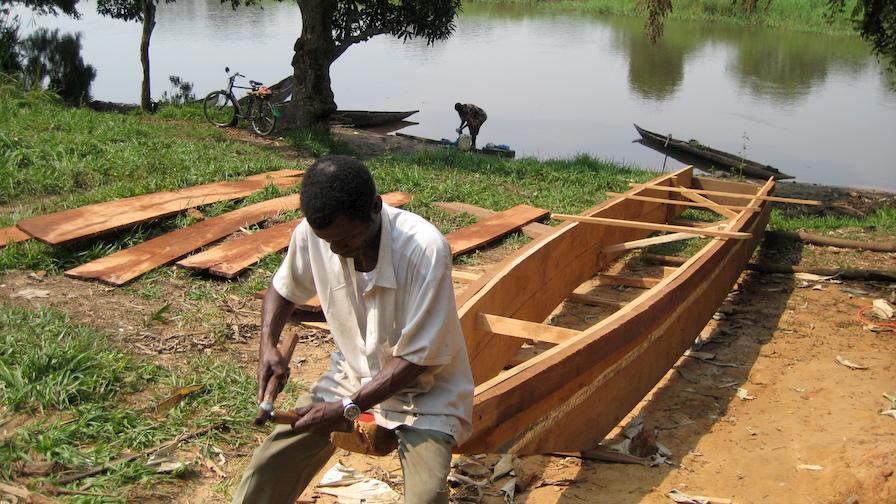

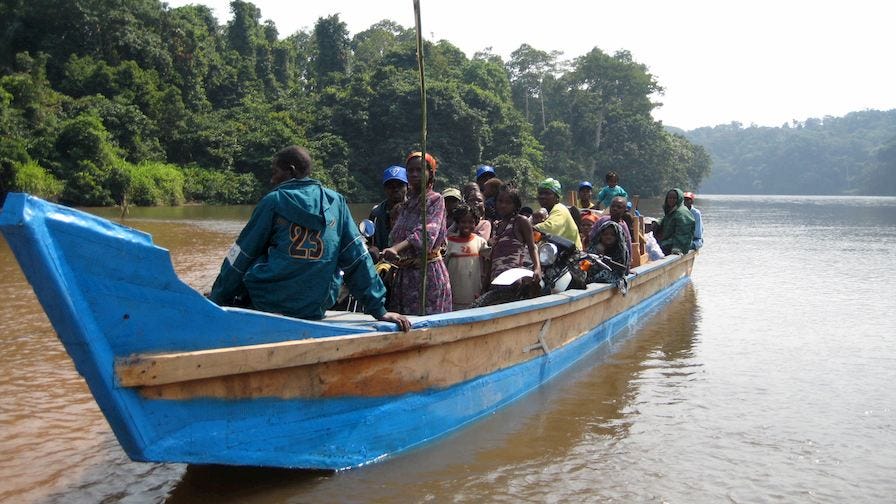

Once we had lumber, the boat builders started to arrive. I wanted to use smaller-sized boats, so we built different sizes to be more economical. Once our boats showed up at different ports, word got around that lumber was available at Kikongo.


Since there wasn’t lumber available anywhere else, a man showed up and said he needed a boat. When he told us the capacity of the boat he needed, we were shocked. We wondered if we would ever be able to build something so large in Kikongo. But sure enough, we produced enough lumber for the boat. The problem was getting the boat into the water. Our community made an announcement in church that on a certain day, they would make a lot of coffee, and if you came down and provided assistance pushing the boat into the water, you’d get some coffee.
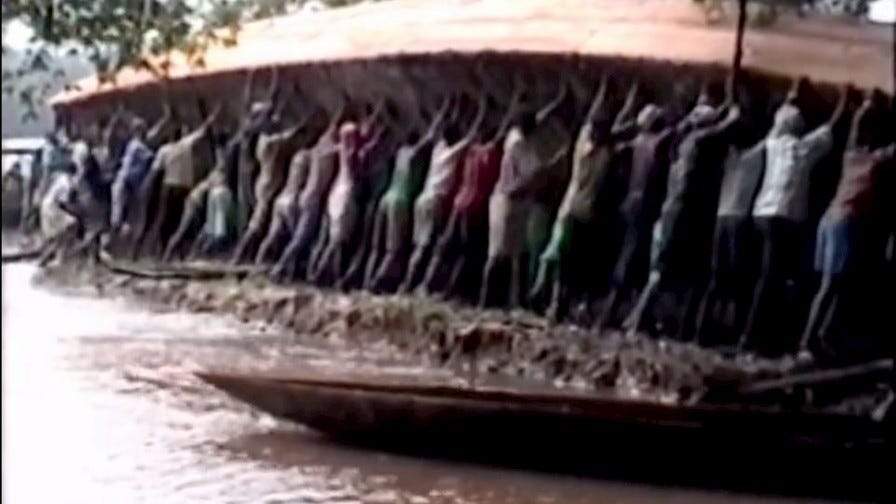

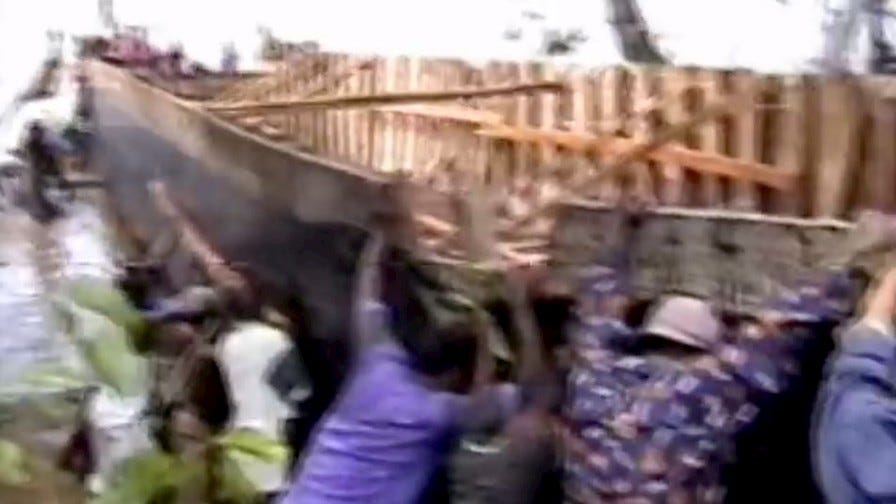

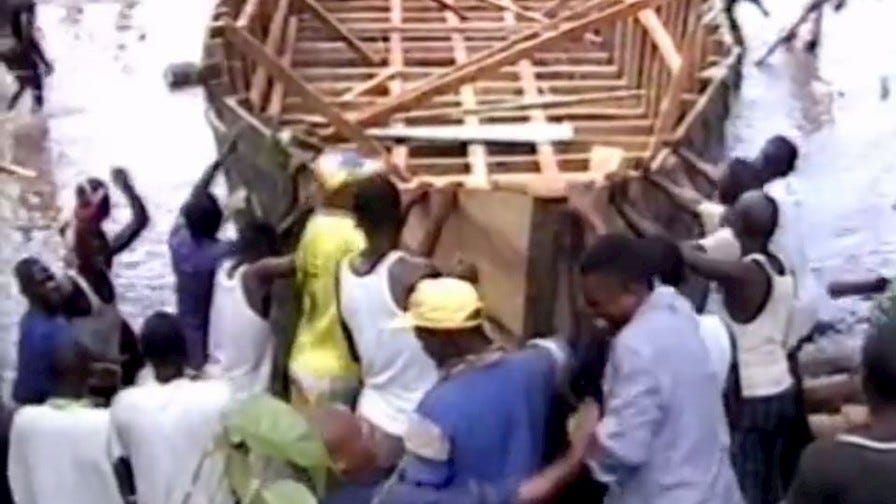

We had a big party that day, as all the young men put their hands on the boat and pushed it. Once it got over the lip of the hill, the weight of the boat drove it into the water. It was an unbelievable moment. To realize it really worked was an amazing thing. Everyone jumped on the boat. We celebrated, and eventually the boat went to the mighty Congo River and we never saw it again.
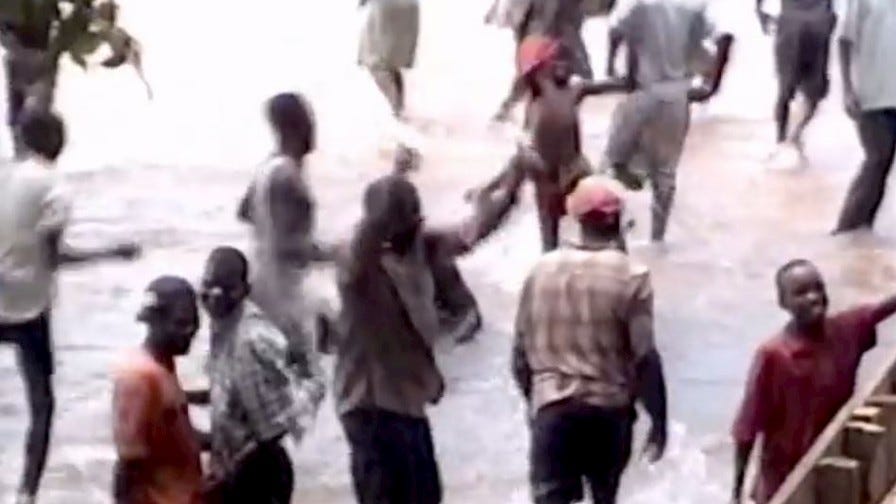

I think probably 150 young men showed up to help. We’ve never built any boats that size since then, but we’ve been able to build a number of boats in the area. Along with the boats, we’ve built about five or six bridges. Kikongo is located on a hill with rivers on either side, so we’re in a sort of peninsula. Almost any direction you go, you have to cross a body of water. The bridges have provided access to the hospital and other places that otherwise would have been difficult to get to.
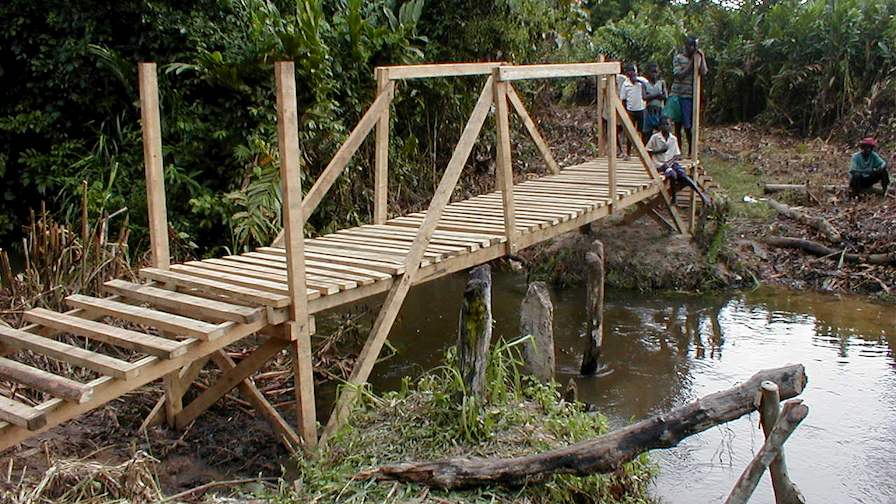

I was on an early morning bike ride once, and there was a crowd of women in the middle of the trail. They wouldn’t let me pass because a woman was giving birth in the middle of the trail. I asked them why they hadn’t gone to the hospital earlier. They said the bridge was too rickety, and they weren’t able to cross. I organized the village and said, “Give us two logs. We’ll cut the lumber, and together we can build a bridge.”




So they floated two logs to us and we designed the bridge and cut it to length. All the villagers picked up a piece of wood, we carried it to the site, and built the bridge. Now people have a way to get to the hospital, rather than balancing themselves on the rickety old log bridge.
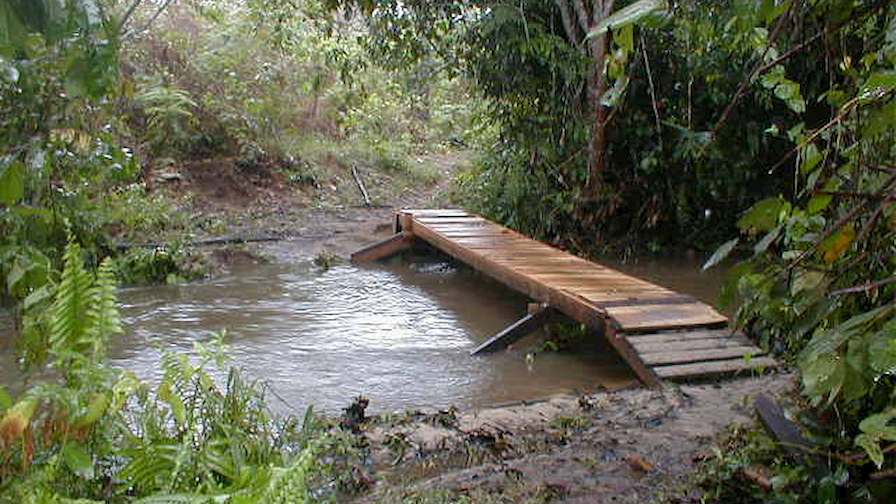

The mill has provided dignity to the lives of the villagers. Poverty is so devastating out there. And it’s more than just hunger—it’s the dignity of being able to have a place to sit down. The lumber mill has been able to provide dignity to Congo because people can take advantage of their own resources and turn them into something useful and valuable.


It’s honoring if you can bury your relatives in coffins, rather than just wrapping them in cloth. We buried a local chief recently, and everyone was so appreciative that this chief could be buried with dignity—not just in cast-off scraps of wood, but with the best lumber. That really brought honor to the people and the chiefs they buried.
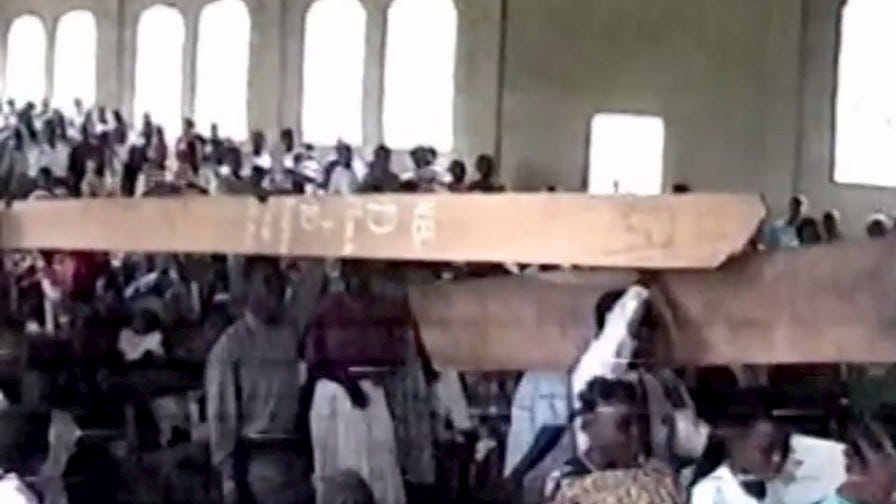

On a day of Thanksgiving where everybody was offering produce of the earth, we decided that we would offer our own portion of lumber. We brought a symbolic board to the church, on which we wrote how many boards would be offered to the church. In Congo, when you give your offering, you have to dance down the aisle to present it. Our carpenters danced with their symbolic board as they brought it down the aisle. It was exciting for everyone.
The mill is owned and operated by the Pastoral School. Students can work at the mill in the afternoons and pay off tuition fees—in this way, the Wood-Mizer is helping the students go through school. In order to be a pastor in a rural setting, you need to be bi-vocational, so the lumber mill enables the students to become bi-vocational.
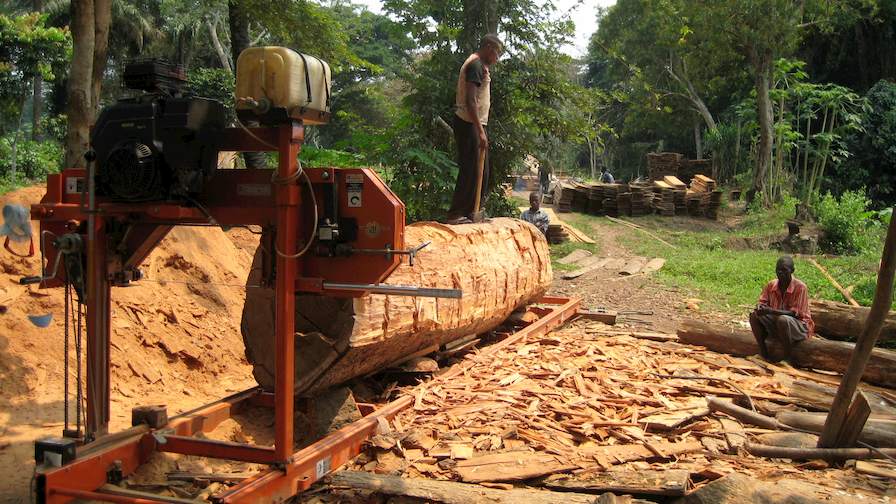

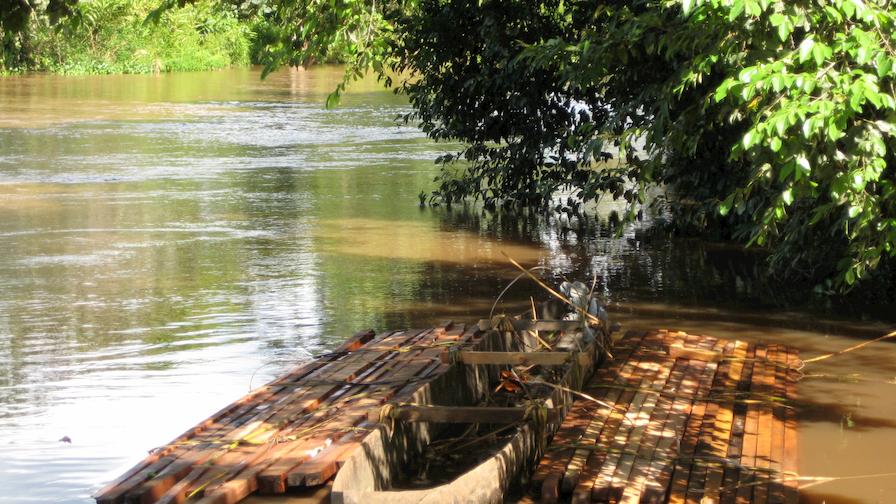

When our students come, they come poor. But after they’ve been at Kikongo, they always leave much better off than when they came. They want to take all the things they’ve built—furniture, beds, tables—back to their own villages. We have to restrict how much wood and furniture students put on the boat when they go back! It’s because of the mill that they’ve been able to produce these things through training.
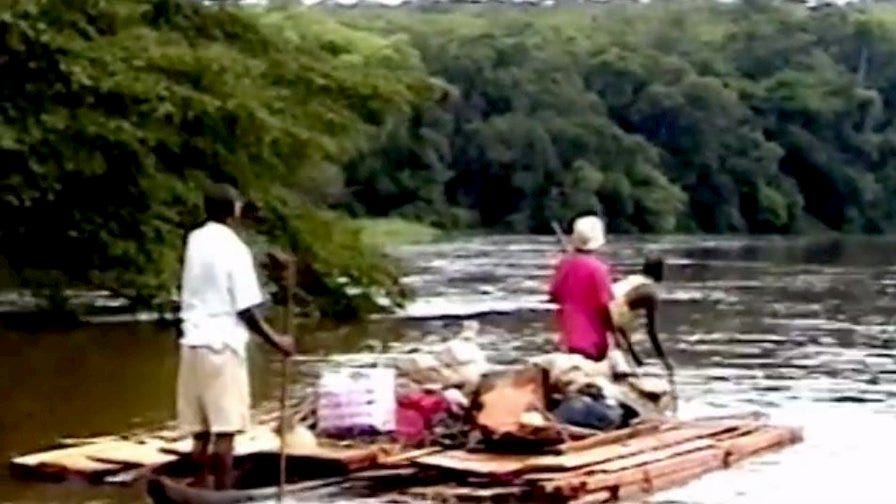

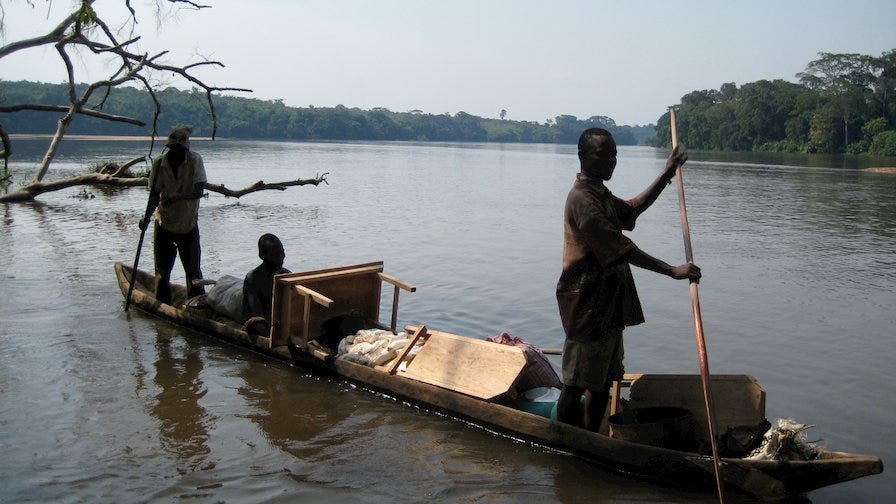

Life is pretty discouraging in Congo—a lot of things can get us down. But whenever I need encouragement, I walk down to the river and I sense the excitement and enthusiasm at the mill. There’s progress here, there’s change. And that’s encouraging for me. I’m not a builder, but I’ve enabled the Congolese to build and become carpenters.
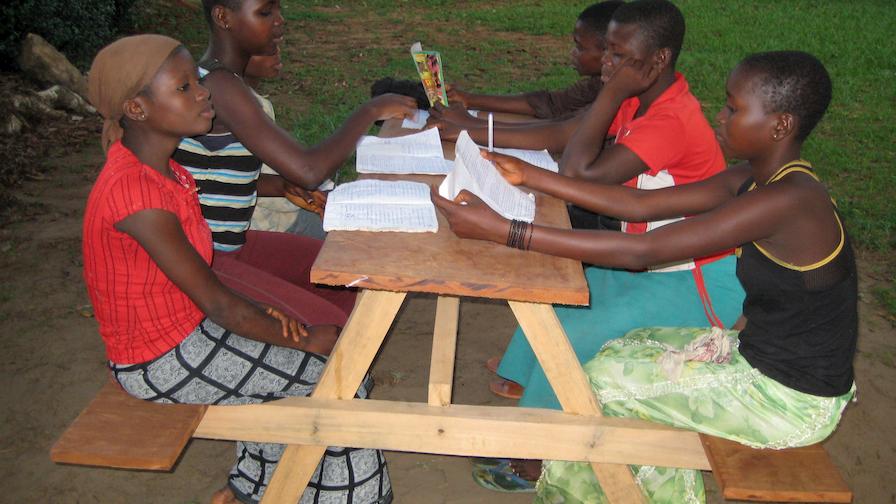

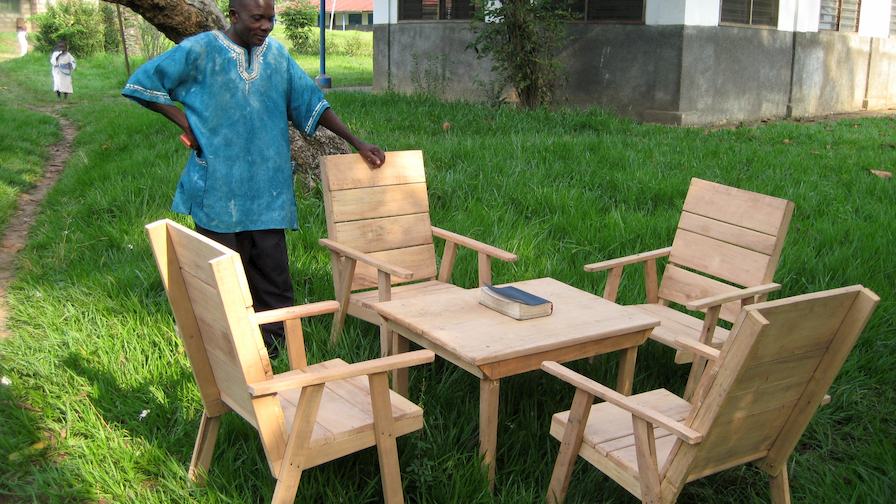

Wood-Mizer will probably be one of my biggest legacies out there. I’ll be remembered because of the sawmill every bit as much as being a pastor. Wood-Mizer is playing a major role in helping the Congolese improve and rebuild their country. We can continue to provide villagers with the tools they need to maintain their dignity and repair the country.
The Democratic Republic of Congo is among the very poorest countries in the world. In the UN’s Human Development Index, Congo ranked almost last. The Congolese make an average of 50 cents a day, whereas the average level of poverty is $2 a day.
Because of the difficulties of the war, the infrastructure of Congo had all collapsed. There is very little employment, and very little to give people hope. It’s hard to understand a level of poverty where you don’t have tables or chairs, and your children have to eat their meals on the ground because their table has been destroyed and turned into a coffin to hold a revered loved one who has passed on.
My name is Glen Chapman, and I’m a second-generation missionary to Kikongo with American Baptist International Ministries. My wife, Rita, is a third-generation missionary. Her grandparents went over to the Belgian Congo in 1924. Rita and I arrived as children in 1957 when it was still the Belgian Congo. We grew up there and began our ministry 25 years ago. We’ve seen a lot of changes in the time we’ve been there, but our mission in Congo is still to cross cultural boundaries and make disciples of Jesus Christ.
We mostly work in rural leadership training. Rural is distinguished from urban because, generally, when a villager is called into the ministry, he goes to the capital city. Once he studies there, he stays. Because of this, we have hundreds of churches with multiple pastors in the city. However, in the villages, we have hundreds of churches without any pastoral leadership at all. So our objective is to train people in a rural setting so that they remain rural.
Life in Kikongo is not much different than it was for our grandparents generations ago. Besides being involved in leadership training, we’re also involved in human development projects. That’s where the lumber mill comes in and provides for the needs of the people. Our Wood-Mizer sawmill has really played a key role in bringing development and hope to our Congolese villages in the midst of their poverty.
As a child growing up in Congo, I remember going away to high school in the capital city. In the summers, I came home for vacation. I spent these summers working in the woodshop with the old carpenters who had been trained by the Belgians.
That was a formative time in my life. Being able to work with the carpenters was a great experience. But when I became an adult and returned to the village, the commercial lumber mills that had furnished the lumber no longer existed. If someone needed lumber, he had to go to the city, buy his boards, and send it to his home in a truck.
So, the lumber was virtually unavailable to the villagers at that time. What furniture villagers had in the past was wearing out. There were no longer desks in the schools. If anyone had a table in the house, it was probably destroyed to make a coffin at some point. My friends would complain that they didn’t have a chair on which to seat their guests and their children ate their meals on the ground.
I looked around. We had plenty of trees, so why didn’t we have lumber? I talked with my old carpenter friends and they took me out to the forest. Here, sawyers dug holes beneath the trees and tried to saw boards that turned out rough and very crooked. One man was in the pit while the other man was on top. The man in the pit would get sawdust showered all over him, so he couldn’t maintain a straight cut. It was difficult to make furniture from these boards.
Somewhere along the line, I heard about Wood-Mizer. I saw the inefficiency of our lumber cutting methods and knew it was time to purchase a sawmill. I came back to the States and purchased an LT25.
When the mill arrived in August of 1998, war broke out on the East side of the country. A lot of the missionaries were being evacuated. Just as we began to cut our first trees and I showed the Congolese the usefulness of our sawmill, we were told we had to evacuate as well because the foreign armies were so close to our village. It was a very tense time.
I looked at this project that had been a dream. The mill had just arrived—how could I leave when this dream was just beginning to be fulfilled? I put my wife and children on a plane, and they were evacuated to South Africa. I stayed on at Kikongo.
As the armies advanced across the country, we were experiencing new birth in Kikongo. We were rebuilding while the rest of the country was in the process of destroying. To deal with the loneliness of having my family gone, we discovered the process of using the new mill.
All the villagers were thrilled. There had never been an industry in the area. All of a sudden, the children who previously could not have been employed were now working at the mill and learning how to be carpenters. People with carpentry skills arrived and cut lumber. Boat builders arrived and began to build boats. We were just a little village that offered hope in the midst of the despair around us.
That was the first year we used the mill, and we continued to use it for eight more years. After that, we purchased an LT15 sawmill because its portability helped in an area where we had no trucks to pull it around. We could take it apart and carry the different sections by hand. The war continued, and it turned out to be Africa’s First World War. We were the only foreigners at our mission station during this time. The government did not normally look in favor upon the Westerners, but they favored us personally because we were providing lumber. The officials began to come to us for their wood.
The mill helped provide diplomacy and offered credibility to the church and to our work. We furnished lumber to all the villages around us. The Roman Catholics bought our lumber to build desks for their schools, the government officials purchased our lumber to use in the capital city—it was vibrant.
The process for cutting the lumber is simple. The villagers cut down the logs, float them down the river to us, and then we roll them up onto the mill. The logs that we roll up onto the mill are far larger than what the mill was originally designed for, but it’s so durable that it has been able to hold up to the beatings we give it. Sometimes we use an ax to make the log small enough to fit on the mill.
Once we cut the lumber, people purchase it and take it downriver. We’re very strategically located on the Wamba River for lumber supply and demand. We’ve been working with the mills for fourteen years now, and what’s amazing is that the people who work on the mills are not mechanics, but they’re able to maintain these mills with simple organizational maintenance.
Once we had lumber, the boat builders started to arrive. I wanted to use smaller-sized boats, so we built different sizes to be more economical. Once our boats showed up at different ports, word got around that lumber was available at Kikongo.
Since there wasn’t lumber available anywhere else, a man showed up and said he needed a boat. When he told us the capacity of the boat he needed, we were shocked. We wondered if we would ever be able to build something so large in Kikongo. But sure enough, we produced enough lumber for the boat. The problem was getting the boat into the water. Our community made an announcement in church that on a certain day, they would make a lot of coffee, and if you came down and provided assistance pushing the boat into the water, you’d get some coffee.
We had a big party that day, as all the young men put their hands on the boat and pushed it. Once it got over the lip of the hill, the weight of the boat drove it into the water. It was an unbelievable moment. To realize it really worked was an amazing thing. Everyone jumped on the boat. We celebrated, and eventually the boat went to the mighty Congo River and we never saw it again.
I think probably 150 young men showed up to help. We’ve never built any boats that size since then, but we’ve been able to build a number of boats in the area. Along with the boats, we’ve built about five or six bridges. Kikongo is located on a hill with rivers on either side, so we’re in a sort of peninsula. Almost any direction you go, you have to cross a body of water. The bridges have provided access to the hospital and other places that otherwise would have been difficult to get to.
I was on an early morning bike ride once, and there was a crowd of women in the middle of the trail. They wouldn’t let me pass because a woman was giving birth in the middle of the trail. I asked them why they hadn’t gone to the hospital earlier. They said the bridge was too rickety, and they weren’t able to cross. I organized the village and said, “Give us two logs. We’ll cut the lumber, and together we can build a bridge.”
So they floated two logs to us and we designed the bridge and cut it to length. All the villagers picked up a piece of wood, we carried it to the site, and built the bridge. Now people have a way to get to the hospital, rather than balancing themselves on the rickety old log bridge.
The mill has provided dignity to the lives of the villagers. Poverty is so devastating out there. And it’s more than just hunger—it’s the dignity of being able to have a place to sit down. The lumber mill has been able to provide dignity to Congo because people can take advantage of their own resources and turn them into something useful and valuable.
It’s honoring if you can bury your relatives in coffins, rather than just wrapping them in cloth. We buried a local chief recently, and everyone was so appreciative that this chief could be buried with dignity—not just in cast-off scraps of wood, but with the best lumber. That really brought honor to the people and the chiefs they buried.
On a day of Thanksgiving where everybody was offering produce of the earth, we decided that we would offer our own portion of lumber. We brought a symbolic board to the church, on which we wrote how many boards would be offered to the church. In Congo, when you give your offering, you have to dance down the aisle to present it. Our carpenters danced with their symbolic board as they brought it down the aisle. It was exciting for everyone.
The mill is owned and operated by the Pastoral School. Students can work at the mill in the afternoons and pay off tuition fees—in this way, the Wood-Mizer is helping the students go through school. In order to be a pastor in a rural setting, you need to be bi-vocational, so the lumber mill enables the students to become bi-vocational.
When our students come, they come poor. But after they’ve been at Kikongo, they always leave much better off than when they came. They want to take all the things they’ve built—furniture, beds, tables—back to their own villages. We have to restrict how much wood and furniture students put on the boat when they go back! It’s because of the mill that they’ve been able to produce these things through training.
Life is pretty discouraging in Congo—a lot of things can get us down. But whenever I need encouragement, I walk down to the river and I sense the excitement and enthusiasm at the mill. There’s progress here, there’s change. And that’s encouraging for me. I’m not a builder, but I’ve enabled the Congolese to build and become carpenters.
Wood-Mizer will probably be one of my biggest legacies out there. I’ll be remembered because of the sawmill every bit as much as being a pastor. Wood-Mizer is playing a major role in helping the Congolese improve and rebuild their country. We can continue to provide villagers with the tools they need to maintain their dignity and repair the country.





